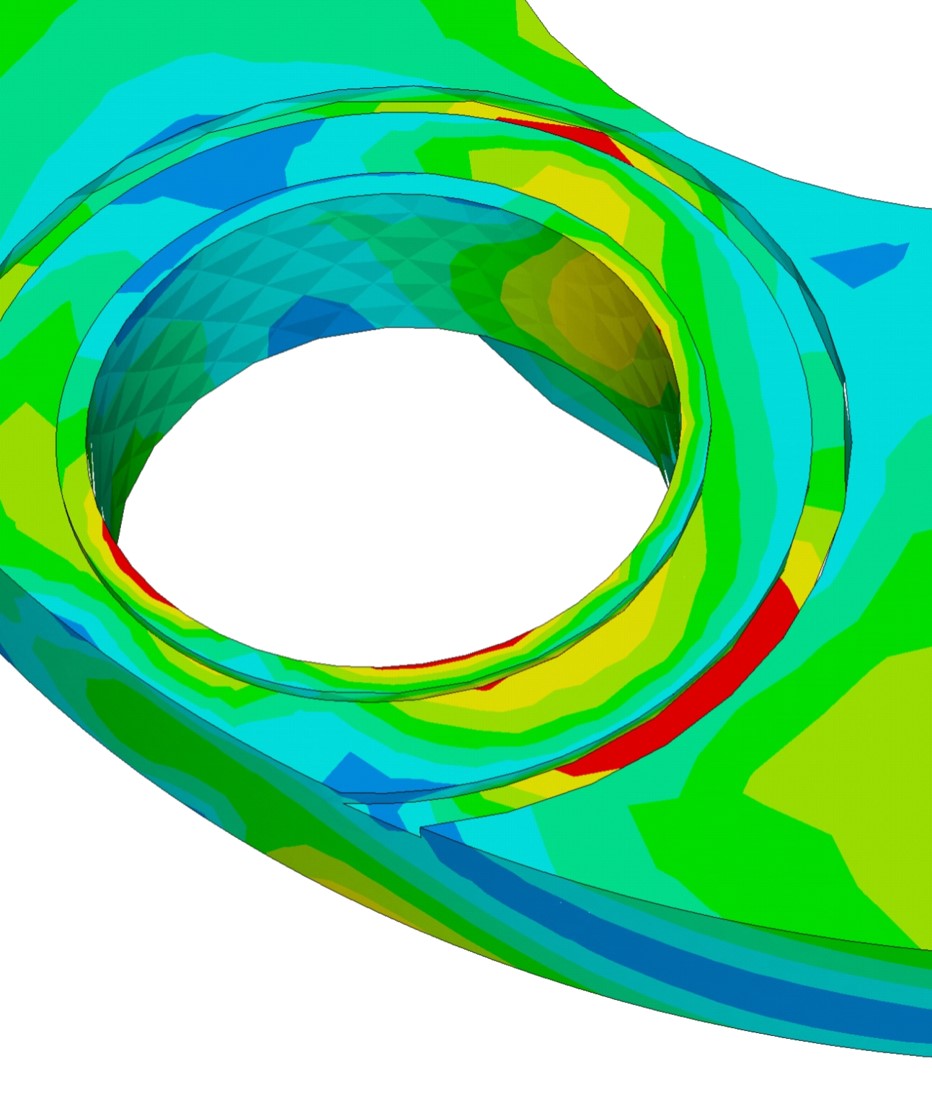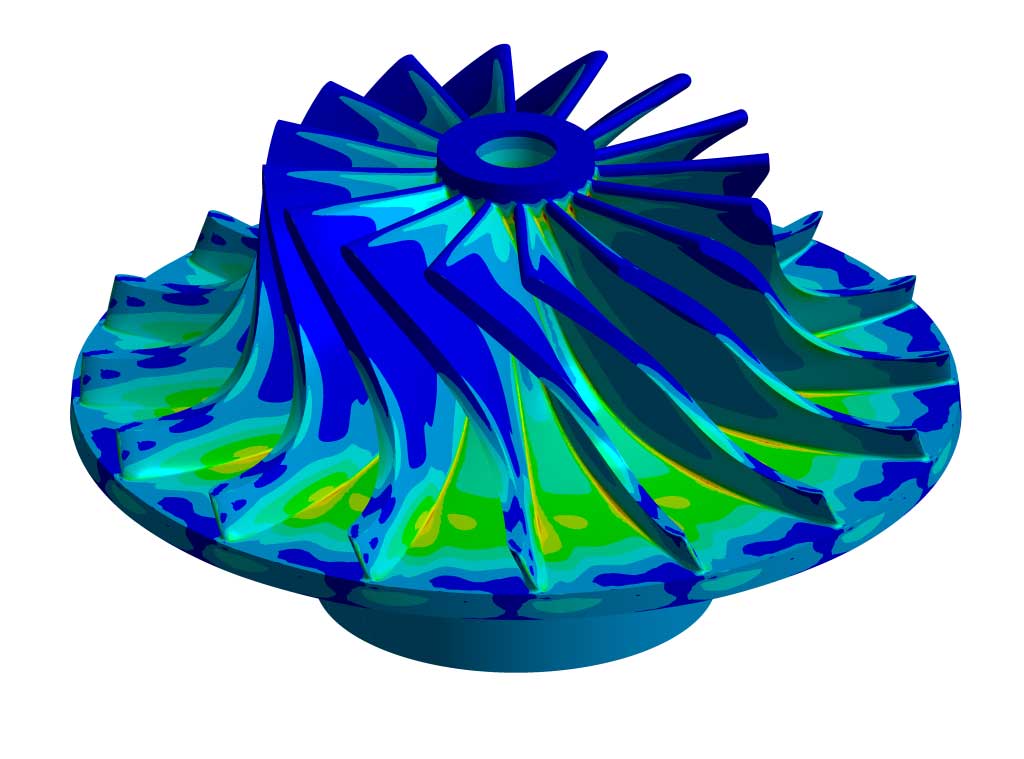Non-Linear Finite Element Analysis (FEA)
State-of-the-Art Non-Linear Finite Element Analysis (FEA) Services Solving Even the Most Difficult Problems.
Why Finite Element Analysis?
FEA simulation work is performed for a variety of reasons, including design of components or assemblies, evaluation and improvement of prototype designs, virtual testing, validation of prototype designs, root case failure analysis, and problem troubleshooting.
MSI applies FEA to structural, vibration, dynamics, rotordynamic, thermal, acoustic, electromagnetic, corrosion, and multiphysics problems, all for a wide variety of materials, including non-homogenous, nonlinear, and anisotropic. MSI uses in-house supercomputing capabilities to handle the most complex engineering problems from mesh through solution.
LINEAR, NON-LINEAR, AND MULTIPHYSICS
The Best FEA Expertise and Analysis Tools
The Most Effective FEA Software Tools
Our software tools include ANSYS, LS-DYNA, PTC Creo Simulate (formerly Pro/Mechanica), ROMAC, and Siemens PLM Femap.
Structural FEA
To predict deformations, stresses, and fatigue life of large structures, such as pumping stations, down to implantable biomedical devices.
Vibration FEA
Modal analysis to predict natural frequency and resonance, harmonic forced response to predict magnitude and phase of response, and spectral analysis to predict random and seismic loading response.
Dynamics FEA
To understand complex transient behavior in response to time varying excitation including contacting bodies, eroding contact, friction, large deflections, and plasticity nonlinearities.
Rotordynamics FEA
To understand torsional natural frequencies and lateral critical speeds of rotating equipment. API and Hydraulic Institute guidelines followed.
Learn More About Rotordynamics FEAThermal FEA
To predict steady and transient temperature fields, thermal expansion/contraction and thermally induced stresses including differing materials, and temperature dependent properties.
Acoustic FEA
Acoustic analysis of fluids for various applications, such as machines where noise may be more problematic than vibration, and in piping where acoustic resonance can cause destructive stresses.
Electromagnetic FEA
To understand magnetic fields and associated electric currents and voltages present in generators, electric motors, conductors, and solenoid designs.
Corrosion FEA
MSI has developed a technique to estimate galvanic corrosion electric currents and material loss over time using a customized finite element method.
Multiphysics FEA
To understand the full performance of a system, especially including complex interactions and side effects.

What is FEA?
Finite Element Analysis is a numerical method for solving engineering and mathematical physics problems. The analytical solution of these problems generally requires the solution to boundary value problems for partial differential equations. The finite element method formulation of the problem results in a system of algebraic equations. The method approximates the unknown function over the domain of the problem by subdividing a large system into smaller, simpler parts called finite elements. The simple equations that model these finite elements are then assembled into a larger system of equations that models the entire problem.
The types of problems MSI addresses with FEA include linear and non-linear capability, stress, fatigue (LCF/HCF), vibration, and natural frequency (including bladed disc), heat transfer (steady and transient), acoustics, ASME Boiler and Pressure Vessel Code Sect. III or VIII, cracking, fracture mechanics, 3D contact with friction, plastic flow, overload, buckling, and creep. This includes complex interactions and side effects. For example, a predicted temperature field can be applied to a structural model to check how thermal growth affects stress. Magnetic fields result in eddy currents that generate heat which deforms structures. Acoustic cavity resonance can vibrate a structure to failure. Aerodynamics predicted in a computational fluid dynamics analysis cause external pressures on a wing that lead to structural deformation of the wing.
FEA Benefits
MSI uses all the above types of FEA (and CFD) to comprehensively evaluate and understand the behaviors pertinent to a problem.
MSI uses field test data used to calibrate FEA models and analyses to real-world conditions to validate predictions.
Once behaviors are understood and validated, we simulate potential remedies. This saves time and money by avoiding trial and error implementation with right-first-time fixes.
As industry leaders, MSI FEA analysts also do field testing and troubleshooting to calibrate their models.

REAL-WORLD EXAMPLES AND CASE STUDIES
MSI In Action
Case Study
Pump Casing Structural Analysis
MSI performs pump casing structural analysis typically under contract from pump manufacturers.
Case Study
Failure Analysis of a Compressor Impeller
MSI was contracted by a customer to investigate a series of blade cracking problems in a compressor impeller.
Case Study
Shock and Vibration Finite Element Analysis of a Printed Circuit Board
Before expensive prototypes were manufactured and tested, the circuit board system was analytically evaluated in an effort to identify weak points so that they could be redesigned.

